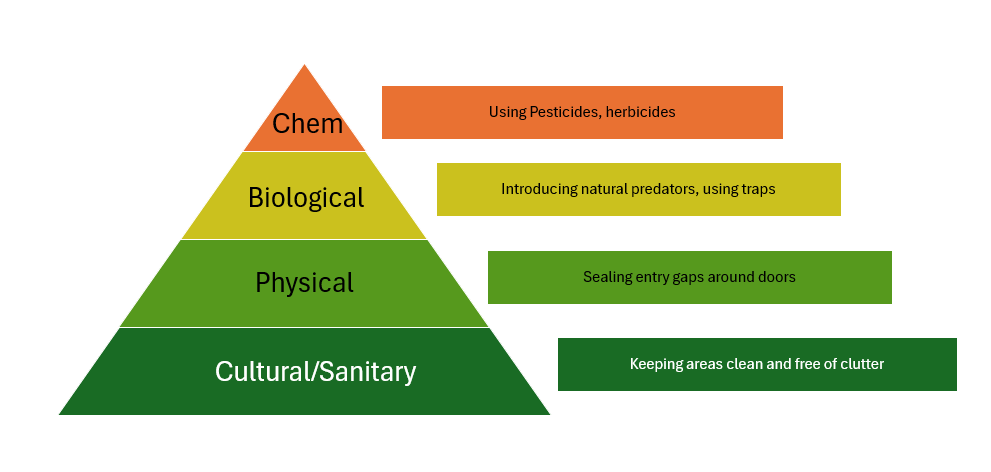|
Bed bugs are insects that feed on human blood. They are often found near sleeping areas in the seams of mattresses, box springs, cracks and crevices in bed frames, and usually spread to gaps behind baseboards, pictures, wallpaper and electrical outlets. Bed bugs hitchhike into a home on clothing, in purses, and on used furniture or other items brought in from infested areas. Adult bed bugs are reddish-brown, wingless insects about the size of an apple seed. When viewed from the side, they are flat, which is why they can fit into such narrow spaces. Newly hatched bugs are white or yellowish, and resemble the adults, but are smaller. Bed bug eggs are white, about the size of a pinhead, and are found in crevices in clusters of 10 to 50 eggs. As they grow, they shed their skins and leave behind shells.
The best way to control bed bugs is to prevent bringing them home in the first place. When traveling, look for evidence of bed bugs before unpacking. Check pillowcases, sheets and mattresses for their feces which look like dark spots –as if someone had touched a magic marker to the fabric. Examine the room thoroughly, especially the wall, baseboard and furniture near the bed.
If you identify bed bugs in your home, you will probably require the help of a professional pest control specialist. But a professional can’t do it alone. It usually requires at least two treatments to remove an infestation, and the resident must take action after/between treatments to assist in the process.
To get rid of bed bugs:
- CALL A PROFESSIONAL PEST CONTROL SERVICE! Infestations will usually require the use of pesticides in conjunction with the cleaning and vacuuming methods listed below. Chemicals are most safely applied by licensed professionals, who have access to the insecticides most effective against bed bugs and are trained in their proper application. Improper application of chemicals is dangerous, and may even make the problem worse. For example, bug bombs are not effective, and may scatter bed bugs to other rooms or neighboring apartments. Repellents such as DEET do not work against bed bugs.
- Cooperate with the Exterminator and/or your Landlord regarding follow-up procedures. In order for treatments to be effective, you will likely be asked to do one or more of the following:
- Removing clutter such as pictures, books and clothing from the infested area, so there are fewer places for the bugs to hide.
- Vacuuming to remove some of the bed bugs; eggs are glued in place and can’t be removed by vacuuming alone. They must be scraped off when vacuuming; concentrate on mattress seams and around any tufts or buttons. Vacuum wherever your inspection revealed the presence of bed bugs—furniture, box springs, bed frames, floors and baseboards. Remove and discard the vacuum bag immediately; place it in a sealed plastic bag and dispose of it in an outdoor garbage can.
- Heating infested items such as clothing, shoes, bedding and blankets in a clothes dryer on high heat for 20 minutes to kill bed bugs and their eggs.
- Enclosing mattresses and box springs in a bedbug-proof zippered cover to kill the bugs inside. The cover should remain in place for more than one year, because bed bugs can survive a long time without feeding.
For more information on bed bugs, visit the CDC's About Bed Bugs webpage.
|

